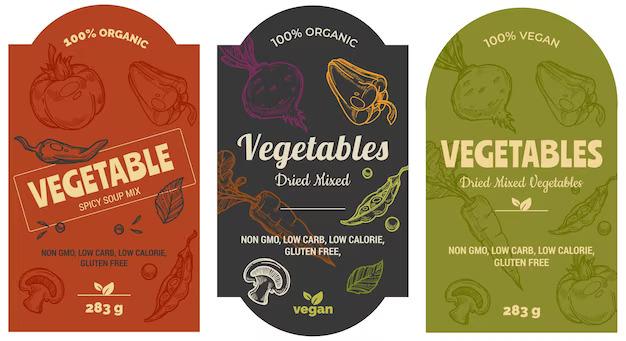KNOWLEDGE IS THE WEAPON DON’T JUST MAKE DECISIONS…MAKE RIGHT AND INFORMED DECISIONS
Are the packed foods you are purchasing and claiming to be healthy actually “healthy”?
When it’s about your health..make right and informed decision.
We think in BioCity Healthcare that it is healthier to make smart decisions about our life. With this in mind one of the most effective strategies for making informed choices when it comes to what we eat is getting familiar with nutrition facts printed on packages or cartons so people can clearly see what they are doing as well as aiding them stay healthy along their path. This information can help the consumer make better selections regarding the food they buy depending on his/her health objectives.
Here’s a step-by-step guide to reading nutrition labels, making it easier for you to navigate the aisles and make better choices for your well-being.
Step 1: Start with the Serving Size
One must recognize that the serving size is the first aspect of a nutritional label. This information shows how much of the food the nutrient info refers to; usually it is not what one would eat in just one portion. Check what you eat against the serving size given to know how many nutrients have been taken in accurately.
Example:
If the serving size is one cup and you eat two cups, you’ll need to double all the nutritional values listed on the label.
Step 2: Check the Calories
In addition, check out the calories per serving. This figure assists in estimating the energy you will be provided with by taking one serving of the food. It is crucial to control the amount of calories you consume in order to stay healthy as well as lose weight whenever necessary.
Tip:
Be aware of the number of calories present in the food you consume so as not to add weight. This is because high-calorie foods may result in weight gain if consumed in large quantities beyond portions as per serving size.
Step 3: Examine the Nutrients to Limit
When you are taking in food, remember the nutrients that are not good for you: for instance saturated fat, trans fat, cholesterol and sodium since they may cause heart disease, high blood pressure and stroke.
Quick Guide:
- Saturated fat & trans fat make up less than 10% of calories we eat in a day, and totally avoid trans fats.
- Daily cholesterol consumption should be lower than 300 mg.
- Do not consume more than 2,300 mg or approximately one teaspoonful per day of sodium.
Step 4: Focus on Nutrients to Get More Of
Point out the advantageous substances which majority of people do not get sufficient amounts of, such as dietary fiber and vitamins like vitamin D or calcium plus iron together with potassium. These substances help in general well-being and avoid several conditions associated with health.
Advice:
- FOR FIBER: Seek after foods that contain three grams of fiber.
- FOR VITAMINS & MINERALS: Look out for Vitamin D, calcium, iron and potassium in high percentages such as more than 20% of the daily reference intake.
Step 5: Understand the % Daily Value (%DV)
The % Daily Value informs you of the amount in one serving of food that a nutrient contributes to your daily diet. Depending on the number of calories you require daily, the %DV may be either more or less than 2,000.
Interpretation:
– 5% DV or less: Low in that nutrient.
– 20% DV or more:High in that nutrient.
Step 6: Read the Ingredient List
The ingredients are put in a list from most heavy to least heavy. So you need to be sure that the first few are really healthy and good for you as they dominate the product as a whole. Check on whole foods and stay away from those that have sugar or unhealthy fats listed as some of their first components.
Tip:
Avoid foods with a long list of ingredients, especially if they include many unfamiliar or unpronounceable items. This often indicates a highly processed product.
Step 7: Look for Added Sugars
Various health issues are likely to be caused by the presence of added sugars such as obesity and diabetes. It will show the amount of added sugars in grams and percentage DV in the nutrition label.
-Women: Limit added sugars to 25 grams (6 teaspoons) per day.
Guidance:
– Men:Limit added sugars to 36 grams (9 teaspoons) per day.
Step 8: Pay Attention to Protein
In order to repair and build muscles, proteins are important. Having high protein requirements from physical exercise or health objectives means that you need to be careful regarding the number of grams available per serving.
Advice:
In this case target 50 grams as the daily intake for an ordinary person but individuals vary in their requirements.
Common Misconceptions About Nutrition Labels
1.Low Fat” Means Low Calorie:
Even if food is labelled as “low fat”, it might still contain many calories since the manufacturer has included additional sugars among others. For this reason it is important that an individual should always check both the number of calories in what they are about to purchase as well as its constituent elements before buying any product.
2.Natural” Equals Healthy:
The term “natural” is not strictly regulated and does not necessarily mean the food is healthy or free of added sugars, sodium, or unhealthy fats
3.Ignoring Serving Sizes:
Always mindful of serving sizes so you can adjust the nutritional values. The amount of calories, sugars, fats, and sodium one can consume increases when several portions are eaten.
That’s not all.
In BioCity Healthcare, we not only help you understand nutrition labels, but also provide personalized nutritional advice by using qualified diet professionals. Our nutritionists can put together a customized nutrition plan for you based on different conditions such as weight, diabetes, high blood pressure, and others. Your general health may significantly improve through simple dietary adjustments.
Have a one-on-one session with our professionals doctors and diectians followed up by a “Diet chart” and nutrition tips.
BioCity Healthcare is offering FREE HEALTH EXPERT AND VIDEO DIET CONSULTATION along with your every health checkup at Biocity.
BioCity Healthcare is providing you full body health checkup, comprehensive full body health check up followed by free doctor consultation and video diet consultation.
Contact BioCity Healthcare today.
Let’s embark on this journey to optimal health together.



